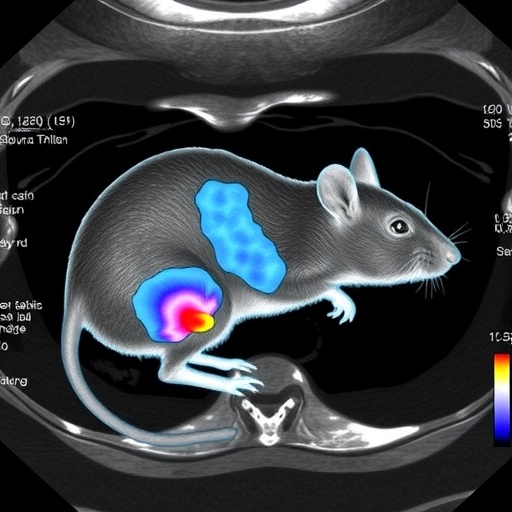In a groundbreaking study set to be released in the Journal of Autism and Developmental Disorders, researchers led by Dr. S. Kaur have uncovered a potential link between prenatal exposure to air pollution and an increased risk of autism spectrum disorder (ASD) in children. The EPINED Study, involving a robust cohort of pregnant women and their offspring, highlights the critical impact environmental factors can have on neurodevelopment during pregnancy.
The implications of such research are profound, particularly in urban areas where air quality is consistently a concern. Air pollution, primarily stemming from vehicular emissions, industrial discharges, and construction activities, produces a complex mixture of harmful particles and gases. It has long been suspected that these pollutants could adversely affect fetal brain development, yet concrete evidence has been relatively scarce until now.
One of the key aspects of the study is its focus on specific pollutants, including fine particulate matter (PM2.5), nitrogen dioxide (NO2), and other harmful airborne substances. These pollutants have been identified in previous research as having neurotoxic effects, leading some scientists to hypothesize that exposure during crucial stages of pregnancy could interfere with normal brain development in fetuses. The EPINED Study meticulously measured the levels of these pollutants before and during pregnancy, correlating them with later diagnoses of autism in the children born to the participants.
The researchers employed advanced methodologies to track both the concentration of air pollutants in the participants’ environments and the subsequent health outcomes of their children. With a sample size that enhances the statistical power of the findings, the study promises to provide deeper insights into the connection between air quality and autism. Maternal health records were analyzed alongside environmental data to establish a comprehensive understanding of the potential risks posed by prenatal exposure to air pollution.
Further, the EPINED Study reaffirms broader epidemiological findings linking environmental factors to developmental disorders. Recent studies have suggested a rising incidence of ASD in parallel with increasing urbanization and industrial activity. This creates a pressing need for policies aimed at improving air quality, particularly for vulnerable populations like pregnant women and children. The evidence from this study may serve as a crucial catalyst for regulatory changes to protect maternal and child health.
As part of their research, Dr. Kaur and her team utilized geographic information systems (GIS) technology to create maps that display air pollution levels in proximity to participants’ residences. This innovative approach not only provided a visual representation of pollution hotspots but also highlighted socio-economic disparities in exposure levels. Areas inhabited by lower-income families often exhibited higher pollution levels, underscoring environmental justice issues within urban settings.
The findings have also sparked discussions about the nervous system’s vulnerability to environmental toxins. Prenatal exposure, particularly during the first trimester, is crucial as this is when the fetal brain undergoes rapid development. Disruptions during this period can have lasting effects, potentially leading to cognitive impairments and behavioral disorders. It raises the question: could mitigating air pollution during pregnancy serve as a proactive measure to safeguard against ASD?
Moreover, the research opens the door for future inquiries into other environmental factors and their combined effects on neurodevelopment. Could the synergistic impact of multiple pollutants lead to even greater risks? The complexities of air pollution and its nose-to-brain pathways require more detailed analyses to unravel these potential interactions and their implications for future health outcomes.
As health advocates unite around the findings of the EPINED Study, calls for more stringent air quality standards are likely to intensify. Research such as this provides a compelling evidence base for stakeholders in public health, city planning, and environmental policy to prioritize cleaner air initiatives. Through collaborative efforts among scientists, policymakers, and community organizations, the trajectory of autism prevalence may very well shift in response to improved environmental health measures.
Ultimately, the EPINED Study serves as a powerful reminder of the intricate links between our environments and health. The growing body of evidence linking prenatal air pollution to developmental disorders shaking the foundations of how we think about public health and environmental safety. As the scientific community digest these findings, it remains crucial for the public to be aware of the potential risks associated with environmental exposures, particularly for pregnant women.
In conclusion, the EPINED Study stands as a monumental contribution towards understanding the profound impacts of air pollution. By underscoring the critical relationship between prenatal air quality and autism risk, this research paves the way for future studies aimed at elucidating the biological mechanisms involved. The potential for significant policy reform stemming from these findings could not only enhance maternal and child health but also pave the way for healthier futures where the specter of autism can be mitigated through improved environmental policies.
As society confronts the rising tide of autism diagnoses, studies like this remind us that changes can be made. Pioneering research like that of Dr. Kaur et al. not only informs the scientific community but also emboldens public advocacy. The hope is that with greater awareness and action, the health narrative surrounding autism might take a hopeful turn.
Subject of Research: Prenatal air pollution exposure and autism risk in children.
Article Title: Association Between Prenatal Air Pollution Exposure and Autism in Children: EPINED Study.
Article References:
Kaur, S., Morales-Hidalgo, P., Guxens, M. et al. Association Between Prenatal Air Pollution Exposure and Autism in Children: EPINED Study. J Autism Dev Disord (2025). https://doi.org/10.1007/s10803-025-07131-0
Image Credits: AI Generated
DOI: https://doi.org/10.1007/s10803-025-07131-0
Keywords: Autism, Air Pollution, Prenatal Exposure, Neurodevelopment, EPINED Study, Environmental Health.
Tags: air quality and child healthautism spectrum disorder riskEPINED Study findingsfine particulate matter and autismimpact of environmental factors on neurodevelopmentmaternal health and air qualityneurotoxic effects of pollutantsnitrogen dioxide and fetal brain developmentpollutants affecting brain developmentprenatal exposure to air pollutionresearch on autism and environmental factorsurban air pollution concerns





